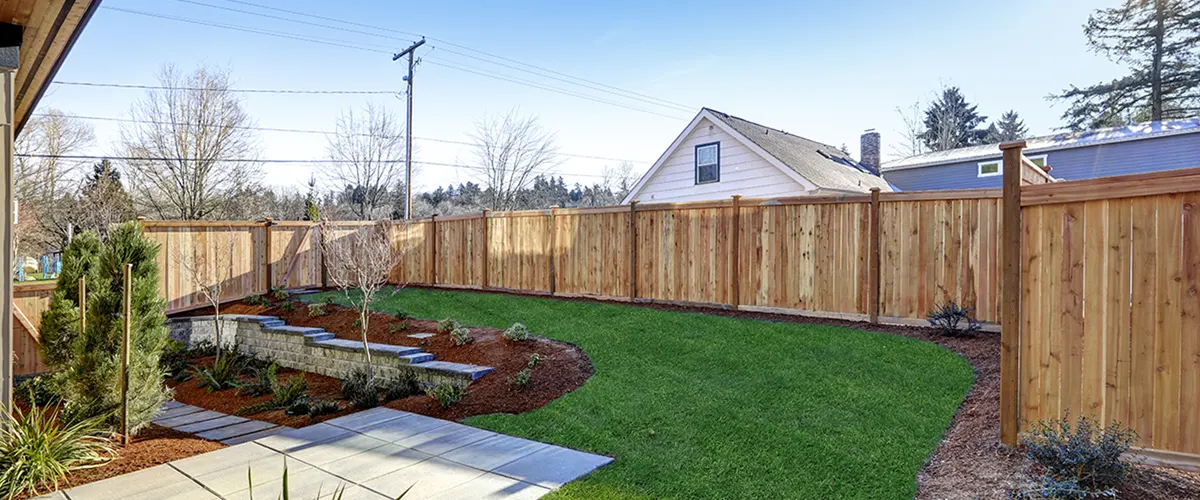A fence is your home’s first line of defense. It’s the best way to improve the security and privacy of your loved ones, while also adding immense value to your property. But when it comes to the cost of fence installation, a few things come into play.
Costs vary depending on the material you choose and how many linear feet of fencing you need. In order to get the most out of your fence installation, it’s important to understand the cost associated with different types of fences and materials.
In this 2022 guide, you’ll find a breakdown of the costs to install your fence in Kansas. Keep reading and make sure you get the most out of your fencing project.
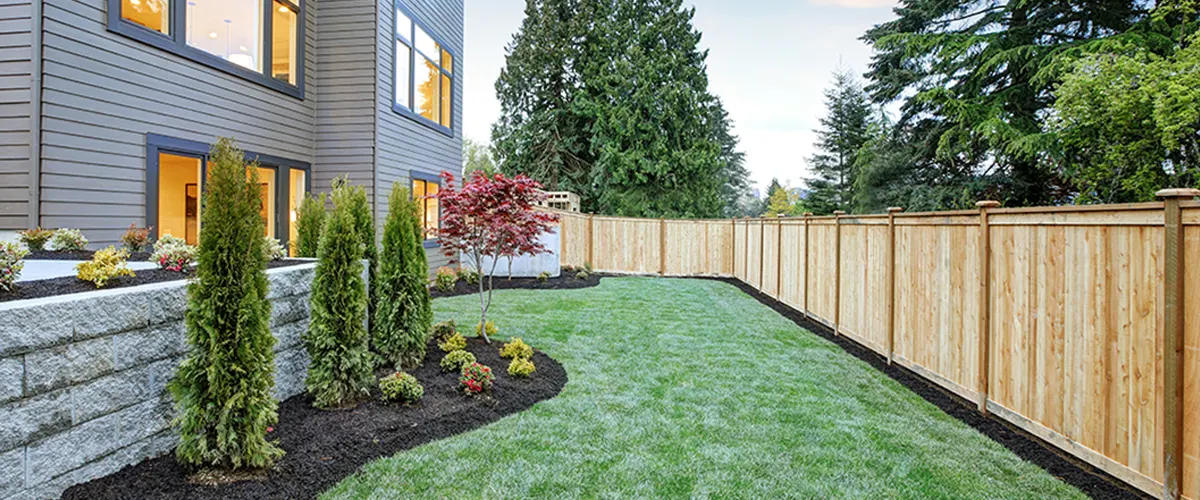
Cost of Fence Materials
There are a variety of fencing options to choose from, and each type has its own benefits. Chain-link fences are the most affordable option and are great for keeping kids and pets safe.
Wooden fences are a popular choice for homeowners because they offer privacy and security. However, they can be more expensive than other types of fencing and may require more maintenance.
Vinyl fences are an affordable option if you’re looking for a low-maintenance fence that doesn’t require painting or staining. And metal fences are a great for homeowners who want a durable fence that will last for many years.
To make it easier for you to decide upon a fencing material, check out this tool! It’s a calculator that gives you an approximate cost of fence installation. Use it for your upcoming project, so you’ll have a clear idea on how much to budget for your fencing project.
Below, we’ll discuss some of the most common materials for fencing.
Vinyl Fence
Vinyl is eco-friendly, needs minimal maintenance, has rigorous durability, and comes in a wide variety of colors. Vinyl fences are affordable and come in a variety of colors to match your home.
However, vinyl fences may not be as durable as other types of fencing and may not withstand severe weather conditions.
Another disadvantage of vinyl is that it lacks the elegance that other materials offer to your property. Compared to a metal fence or a stone fence, vinyl will barely increase the value of your home, and you’ll spend more money replacing the damaged vinyl boards.
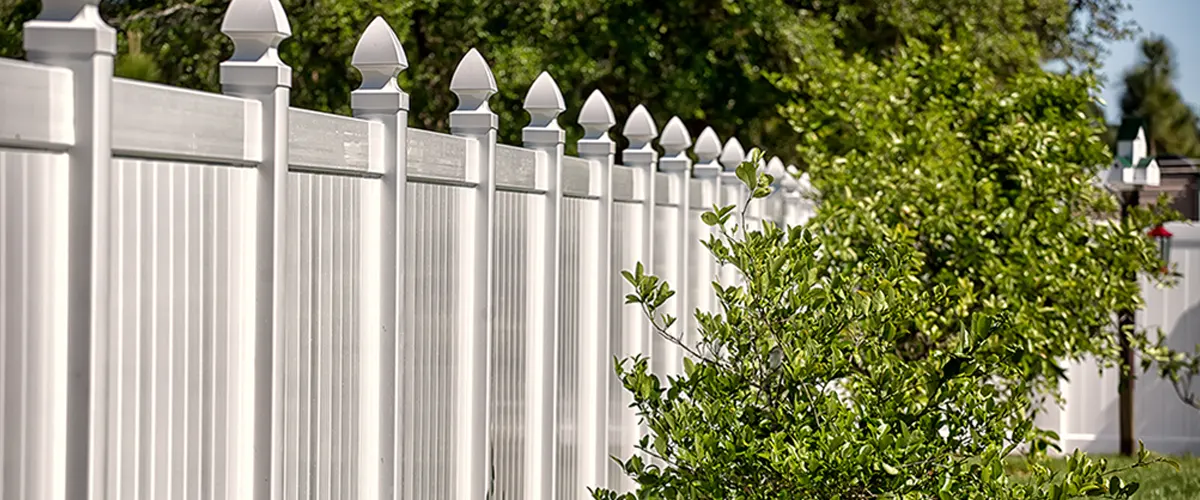
Costs Of Vinyl Fencing
Vinyl fence installation costs between $25 to $36 per linear foot, with most homeowners paying between $3,750 and $5,400 for a 150-foot fence.
The downside is that vinyl fencing costs a lot up-front, but makes up for the price over the long-term with a life expectancy of 20 to 30 years.
Cost of Vinyl Fence Installation in Kansas
- $18.12 per linear foot (4 ft fence) (Range: $15.41 - $20.83)
- $17.50 per linear foot (6 ft fence) (Range: $15.00 - $20.00)
Chain-Link Fence
Chain-link fences are made up of metal wires that are woven together to create a fence. They are the most affordable type of fencing, and they are perfect for keeping kids and pets safe.
Chain-link fences are easy to install and can be erected in a matter of hours. They are also very durable and can withstand severe weather conditions if the posts are deep enough in the ground. Chain-link fencing comes in 3′ to 12′ heights with galvanized steel or black vinyl-coated steel.
However, chain-link fences do not offer much privacy and may not be suitable for all homeowners. It lacks the aesthetic element and will not match a high-end home.
Costs Of Chain-Link Fencing
The cost of fence installation with chain-link costs $9 and $30 per linear foot, with homeowners paying an average of $1,350 to $3,900 to have this fence installed.
A black vinyl-coated chain-link fence costs $10 to $34 per foot or 10% more at than the standard galvanized steel.
Cost of Chain Link Fence Installation in Kansas
- $12.01 per linear foot (4 ft fence) (Range: $10.16 - $13.85)
Wood Fence
Wood fences are a popular choice for homeowners because they offer privacy and security. However, they can be more expensive than other types of fencing and may require more maintenance, like water sealer, stain, and paint.
Wooden fences are a great way to increase the value of your home and provide privacy and security for your family. They come in a variety of styles:
- Picket fences
- Ranch fences
- Shadowbox fences
- Vertical board fences
However, wooden fences require regular maintenance to keep them looking their best. You’ll need to stain or paint them every few years, and you may need to replace damaged boards occasionally. Wood also doesn’t hold up well in severe weather conditions.
Costs Of Wooden Fencing
Wood fence installation costs between $13 and $27 per linear foot for a typical 150-foot privacy fence.
For example, a wood picket fence costs from $1,711 to $3,290 on average, and most homeowners spend around $2,755 to install wooden fencing around their home.
However, prices vary depending on the type of wood you select, the size of your fence, design, layout, and labor costs.

| Material | Cost Per Linear Foot |
|---|---|
| Pines | $3 – $7 |
| Spruce | $4 – $6 |
| Redwood | $4 – $7 |
| Cedar | $4 – $8 |
| Tropical Hardwoods | $6 – $15 |
The pressure-treated pine is the cheapest wood you can get for fencing. It ranges from $3 to $7 per linear foot, with other woods prices at $4 to $15 per linear foot.
Keep in mind that the cheaper you go with the lumber, the less structural integrity it will deliver. With that being said, pressure-treated pine it’s less likely to stand up to rot and deterioration, and will need higher maintenance than any other type of wood.
Cost of Wood Fence Installation in Kansas
- $14.29 per linear foot (4 ft fence) (Range: $12.85 - $15.72)
- $17.00 per linear foot (6 ft fence) (Range: $14.00 - $20.00)
Wrought Iron Fence
Wrought iron fences are a popular choice for homeowners because they offer security and privacy. They are most commonly used for:
- Garden fences
- Driveway gates
- Railings
- Security fences
Wrought iron fencing can have customed designs, be used to enclose pools, or mixed with brick columns to create a luxury look.
However, wrought iron fences can be expensive and require more up-front investment than other types of fencing.

Costs Of Wrought Iron Fencing
The cost of fence installation with wrought iron ranges between $30 to $50 per linear foot. Homeowners pay around $4,500 to $7,500 for a 150-foot fence of this material.
On average, 75% of your costs are attributed to materials alone. Despite the strength that an iron fence delivers, it will still need maintenance that includes the need to sand and repaint every 24 to 36 months, to ensure corrosion is kept at bay.
Cost of Wrought Iron Fence Installation in Kansas
- $23.08 per linear foot (4 ft fence) (Range: $20.31 - $25.85)
PVC And Composite Fencing
Composite fencing is made of two or more materials, such as wood and plastic, to create a sturdy fence. It is a popular choice for homeowners because it is durable and can withstand severe weather conditions.
Composite fencing is available in a variety of colors and styles, and many contractors will custom the composite pickets to match your home.
Typically, PVC comes in 6′ wide panels, and vinyl posts are set in 3′ deep concrete holes.
Supplies required to install PVC fencing include:
- Materials
- Fasteners
- Post concrete
- Connectors
Costs Of Composite Fencing
The average cost of PVC or composite fencing ranges between $22 to $33 per linear foot, with most homeowners spending $3,750 for a 150-foot fence.
PVC doesn’t rot, decay, isn’t subject to damage from insects, doesn’t grow mold or mildew, and doesn’t need to be repainted. PVC fences installed professionally can last for 15 years or longer.
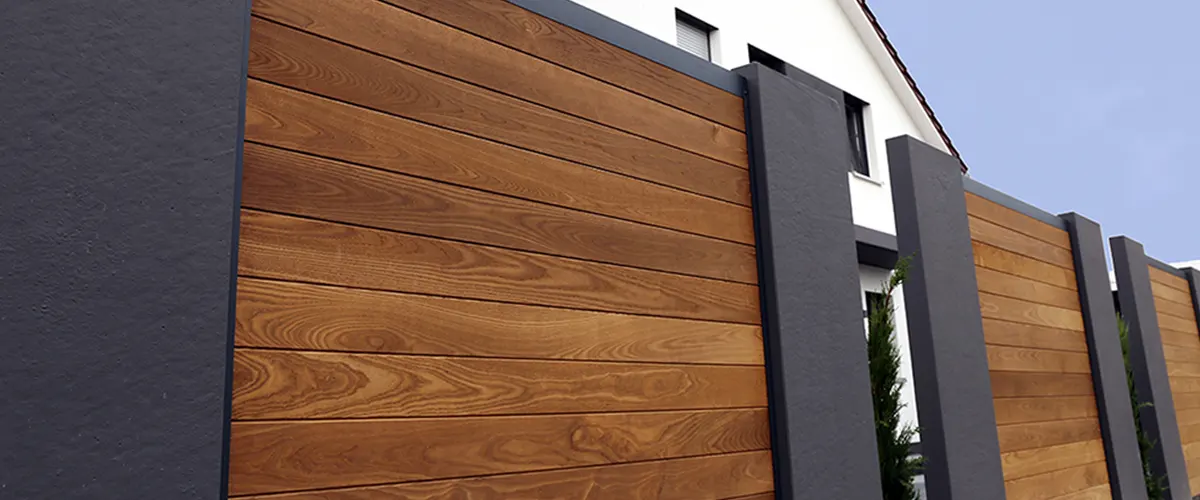
Factors that affect the cost Of Fence Installation
The cost of fence installation is influenced by more than just materials. In addition to size and materials, here are some other factors that impact the final costs:
Permits
Depending on your jurisdiction, you may need a building permit to put up a fence.
Building permits are required for most types of fencing, and the cost of the permit varies depending on your location. Generally, the permit costs between $25 and $200.
In order to get a building permit, you will need to submit a sketch of the proposed fence, as well as photos of the property. You may also be required to submit a survey of the property.
Surveys
Utility lines should be located and marked before any digging begins.
You’ll also want to have a land survey done to ensure your fence lies completely on your property.
Make sure the contractor you choose to work with makes getting the permits and the survey easy, so you won’t stress over any inspection after the project is completed.
Condition of the Land
You’ll have to make sure the terrain is flat and the soil is soft, as these will ensure a smooth installation process.
If the space is hilly or rocky, more work will be required to install a fence, driving up the cost. If the area needs to be leveled, obstacles cleared, and the surroundings protected from damage, it entails more work, so a higher price.
Here at HankinsDecks you’ll get an accurate quote after the on-site visit. You’ll get no additional fees in the midst of your project, and you’ll know how much to budget to get the perfect fence for your home.
Fence Removal
Removal of a fence typically costs between $2 and $5 per linear foot, depending on the size and type of fence. For example, a fence made of wood will be easier to remove than a metal fence.
If there is concrete attached to the fence posts, this will also need to be removed, which will add to the cost.
Gates
Gates can be a significant expense. They cost from $200 to $1,000 or more. The cost of a gate depends on its size and type, as well as the materials used.
Wooden gates are typically the cheapest, and iron gates are the most expensive. Gates made of other materials, such as PVC or composite, fall in the middle price range.
If you need a gate that is wider than 8 feet, it will likely cost more to have it built. Electric gates that open automatically can also be more expensive, but they add comfort and accessibility. You won’t need to get out of the car to open and close the gate anymore, which saves a lot of time and frustration.
Make sure that you have the measurements of the opening where you want the gate installed. This will ensure you get a gate that fits properly.
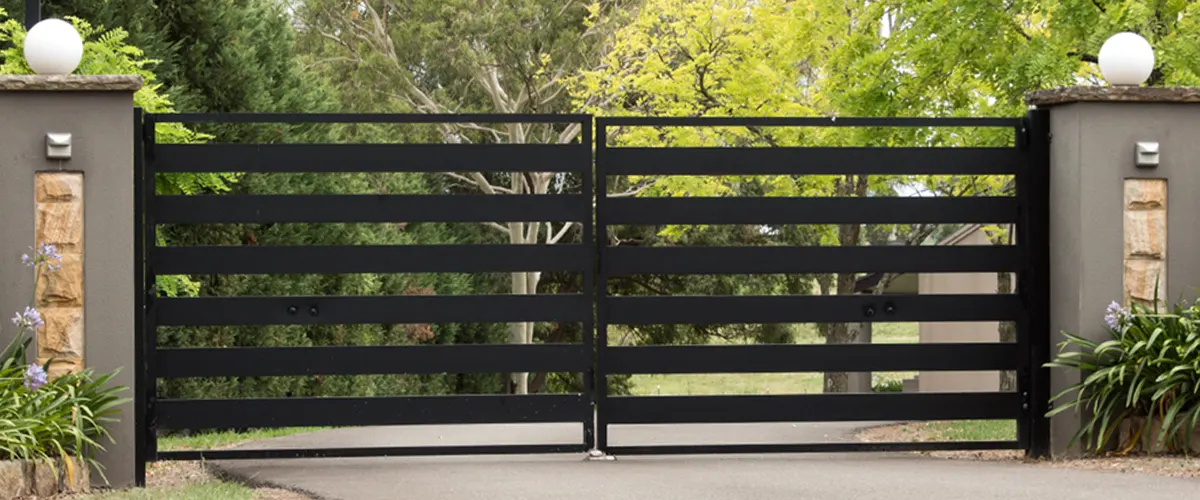
Electric Fences
Electric fences use electricity to deter animals (or people) from entering or escaping a certain area. They are often used to keep pets or livestock inside a fence, as well as to keep intruders out.
There are two types of electric fences:
- Low-voltage
- High-voltage
Low-voltage electric fences use a current of less than 20 volts, while high-voltage fences use a current of more than 20 volts.
The type of electric fence you choose will depend on the needs of your property. If you need a fence to keep animals in, a low-voltage fence may be sufficient.
The main expense of an electric fence is the wire, not the structure. Electric fences can cost from $10 to $50 per foot, depending on the type and thickness of wire used.
A strand of barbwire can be quite expensive, while low-voltage wire is usually a more affordable option.
Installation of an electric fence usually costs between $2 and $10 per foot. The more complicated or difficult installation – such as a corner or end post – the more it will cost.
If you need existing wooden posts replaced with metal ones, this can increase the price of your electric fence by up to 50 percent.
Fence Installation Tips

When installing a fence, make sure to:
- Clear the area of any rocks or other obstacles that could damage the fence. This will also save the builder time, and since contractors work per hour, it will save you money as well.
- If the terrain is hilly or rocky, you may need to do more work to install the fence, which will drive up the costs.
- Make sure the soil is soft so that the installation process goes smoothly. Digging in soft soil is way easier and less time consuming than digging in rocks and hard soil.
- If your space is uneven, have a contractor assess it to see if it needs to be leveled before installation begins. Fences can be built uphill or downhill at the cost of decreased aesthetic.
- Ensure you have the proper permits and surveys in order to avoid any inspection headaches down the road.
Why Shouldn't Fencing Be A DIY Project
Although installing a fence may seem like a simple task, there are several factors to consider before starting construction.
One of the main reasons why fencing should not be attempted as a DIY project is because of the permits and surveys required. Without these documents, your local government may not approve the installation, which could delay the process or lead to fines.
Another reason why fencing should be left to the professionals is because of the terrain. Experts have access to excavators, mining shovels, trenchers, and dozers that make digging way easier.
If your land is not even or has rocks or boulders, this machines will make the job way easier.
Here at Hankins Decks we love helping homeowners achieve their envisioned project. You’ll get our full attention and dedication to ensure your project turns out perfect.
Maintenance Tips
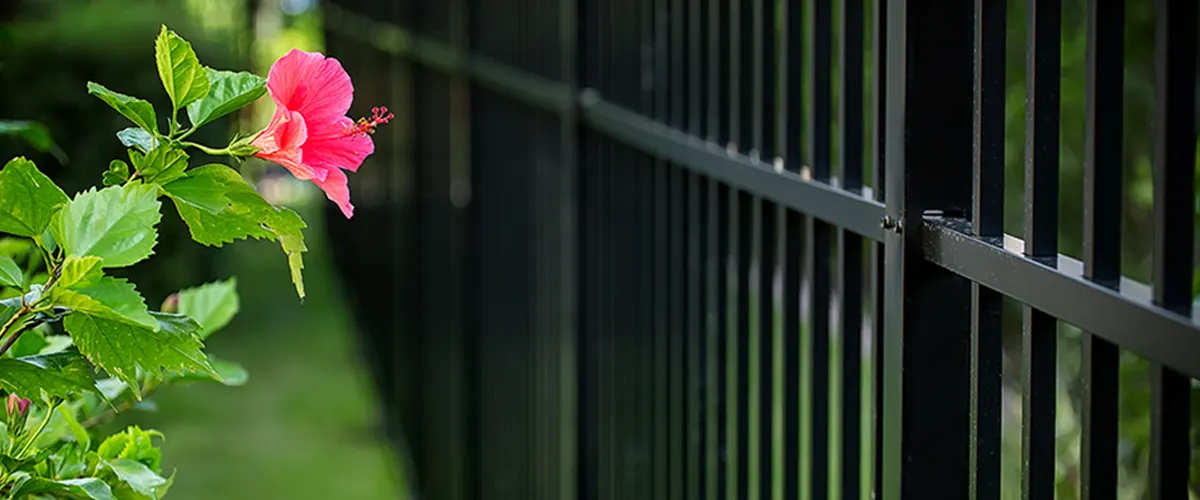
Here are a few tips to help you keep your fence looking its best:
- Make sure to trim any overgrown branches or plants that may be blocking the view of the fence.
- Check for any damage or repairs that need to be made, and fix them as soon as possible.
- Replace any damaged or missing boards or posts.
- Paint or stain the fence if necessary.
- Clean the fence regularly, using a brush or hose.
Conclusion
Building and installing a fence is a big investment, and one that adds value to your property in many ways. Not only that, but a fence will improve the curb appeal of your home and will increase your privacy in your yard.
In 2022, the average cost that homeowners pay for fence installation in Kansas is between $2,150 and $2,681.
The cost of installing a fence depends on many factors, so it’s important to get accurate quotes from several contractors before you make a decision.
Although a big job, a fencing project doesn’t have to be expensive. By understanding the factors that impact the cost of installing a fence, you can work with a professional contractor to get the best price and ensure your fence is installed properly.
Get in touch with our experts from Hankins Decks to ensure your fencing project go smooth with the easiest contracting process there is!
